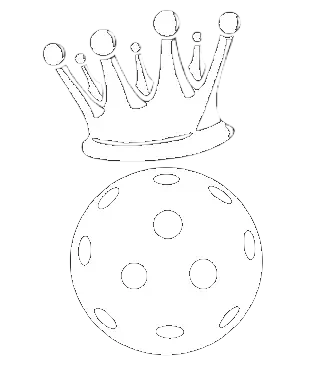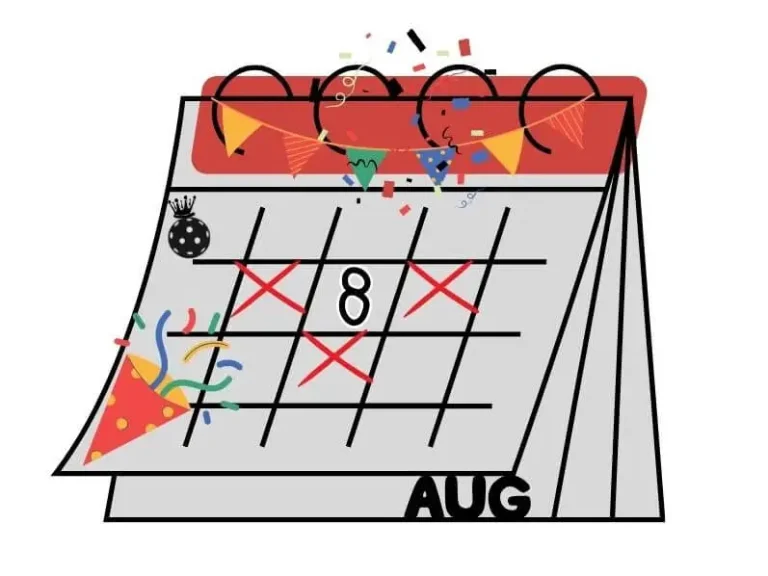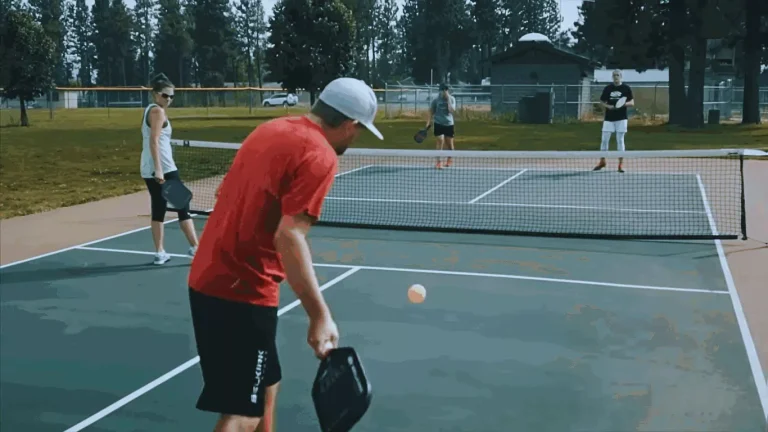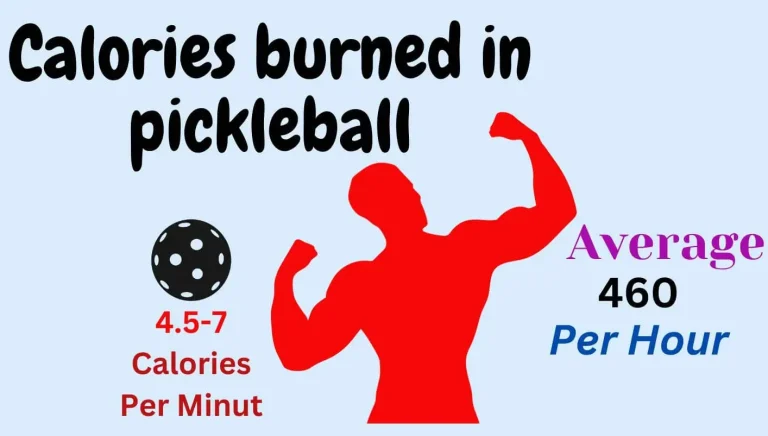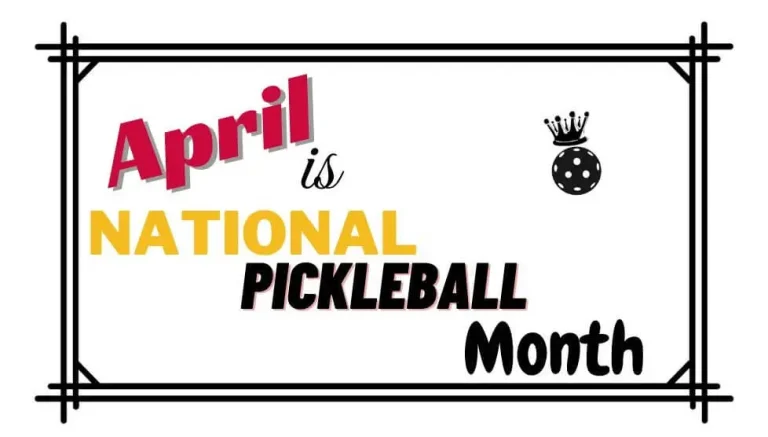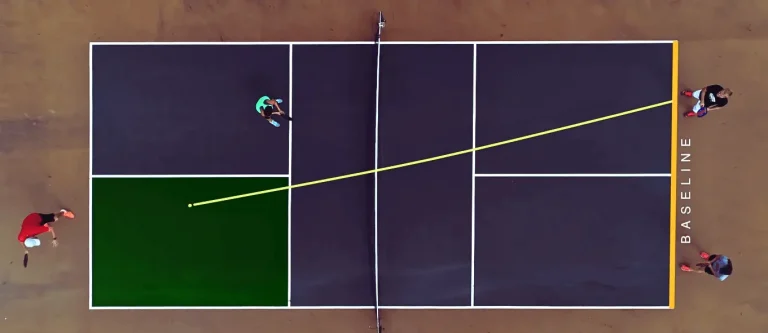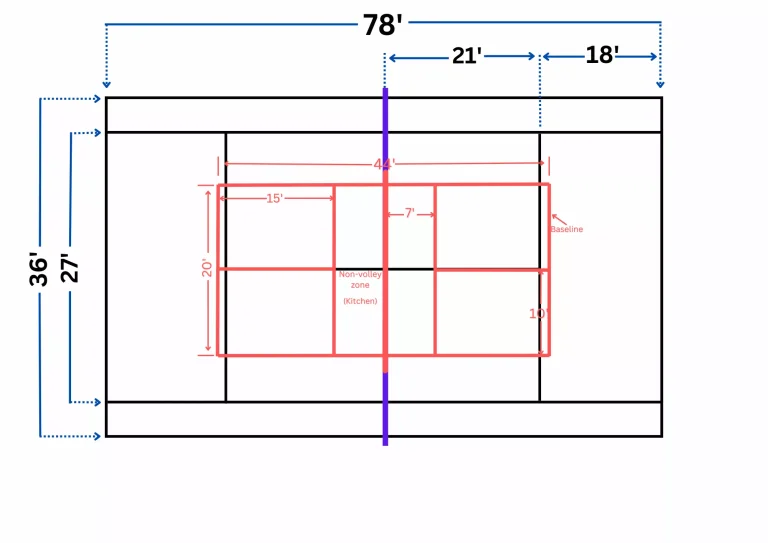Pickleball terms | Slang and terminology.
There are many pickleball terms that often confuse new players. Different kind of pickleball words are used by professional or regular players to convey the message or to call something in short that can save time. These terms are more likely connected to the parts of court or types of shots and many other things.
So, let’s discuss and simplify all these pickleball terms and phrases so that you don’t confront confusion next time when playing on a court with seniors.
Pickleball terms & their role.
Pickleball terms help to save time, especially in tournaments where a lot of teams compete and time matters a lot. So, instead of explaining the fault or guiding your teammate which is time-consuming, use these terms to make it fast.
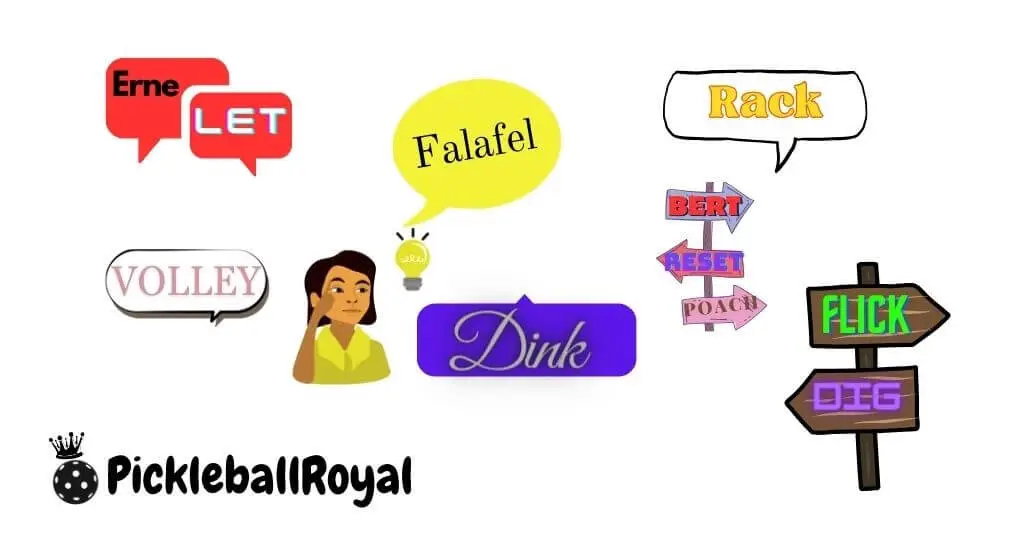
- Carry: Could be defined as(a ball carried on the face of a paddle). Although it is not carried, it looks like being carried when a player hits.
- Cross-Court: A diagonal court opposite of your court is called a cross court in pickleball.
- Dead ball: If a player makes a fault, then this is often called a dead ball.
- Skinny singles: If you are playing as singles and want to make the game easier then you can cut the court from half in linear and use either the right or left side from the center line. This will be called skinny singles.
- Dink shot: A shot played with less force to make the ball land in kitchen(non-volley zone) area.
- Kitchen: Also called as Non-volley zone is the area between the net and NVZ line. As the name shows volleying the ball is prohibited while standing or touching this area.
- Double bounce: There are two things denoted to this and depends on the condition that are they being used. (1) If a ball bounces on the same side twice, (2) the Double bounce rule used for serve means the ball should bounce once on each side on serve.
- Backcourt: Imaginary area like the area near to baseline. This term could be used to ask teammate to move at the back of court in a game.
- Double hit: Refers to the ball being hit twice on same side before crossing the net.
- Midcourt: The area right in the center of base line and NVZ line.
- Stroke: Hitting the ball in a game is called a stroke.
- Drop shot: Also called (drop shot volley). A shot that lands close to the net on the opponent’s side. This is one of the hardest shots to play a needs a lot of practice to master it. It causes your opponent to move close to the net and free the space at his back and then you can hit the ball at that empty place to secure a point.
- Fault: In pickleball lingo, a fault is a “Rule violation” that stops the game. As a penalty, the opponent will get a serve or score depending on who served.
- First serve: This means only one player in doubles can serve first serve of the game and in case of any fault the the opposing the gets next turn. When game begins after this every player will serve on their turn.
- Half Volley: According to the pickleball terminology if a player hits the ball right after touching/bouncing on the court surface before reaching a specific ideal position.
- Groundstroke: Hitting the ball after a bounce on the ground is called a ground stroke and most of the shots fall in this category.
- Shadowing: Moving accord with your teammate in a doubles game.
- Hinder: Anything that affects a player’s ability to play like if a ball comes from the court next to yours or anything similar.
- Let: A shot that hits the upper portion(top band) of the net but somehow manages to land in the opponents court is called a let.
- Soft drop shot: A shot that is hit with a gentle touch that is enough to make the ball land in opponents court softly close to the net in NVZ. This type of shot is used if opponent is standing near to the baseline.
- Transition zone: This area is located between Kitchen and baseline where a player can play both defensive or offensive.
- Volley: A shot is known to be a pickleball volley if a ball is been hit in the air back towards opponent court before it touches the ground.
- Line calls: If ball lands directly on sidelines or baseline in a rally is called line call.
- Champion shot: In a rally, if the ball bounces two times in NVZ then this will be called a champion shot.
- Rally: When a player serves and the opponent returns it without any fault and both start hitting towards each other without any fault then this is called a rally.
- Lob: In pickleball terms, if a player hits a shot higher than then opponent and makes it land close to the baseline is called a lob shot. This is used to force opponent to move back.
- Passing shot: A shot that is aimed for from the opponent as much as possible so that he can’t hit it back.
- Drive: A shot that is played with force and move back at height and travel parallel to court(linear motion).
- Smash: A shot that is played overhand with force. This shot could also be called as power shot.
- Slice: As this slang shows, if a player hits a ball with a paddle moving downwards like slicing. This is used to add a backspin to the ball and is also called a chop.
- Backhand: This shot is played with the back side of hand facing the net.
- Forehand: If the front side of the player’s hand (palm side) in which he is holding the paddle is towards the net when hit the ball is called a forehand shot.
- Body shot: When the ball hits a player is called a body shot and results in a fault. The opponent will get a point for it.
- Erne: A shot that contains a lot of spin. This shot helps to trick the opponent and grab a point. This is one of the pickleball spin shots.
- Bert: It is similar to erne and the only difference is it is played in doubles and occurs if a player jumps in front of his teammate while standing close to NVZ and hits back ball with a spin.
- Continental grip: If a paddle is held by a player in a manner that his thumb and index finger are making a V shape on the paddle grip.
- Doubles: If game is played by four players at a time. Two players on each side.
- Double elimination: Usually used in a tournament format. This means a team has to lose two game to be eliminated from the tournament.
- Dill ball: A ball that inside the court lines and bounced once, making it a live ball is called as dillball.
- Sideout: If a team or player serves a ball and makes any fault the opponent team or player gets to serve next.
- Down the line: Shot that is been hit in the direction of of a sideline of opponents court.
- Falafel: This is a pickleball slang that describes a shot that is hit with low power and land short in opponents court.
- Flapjack shot: If a shot is played before it bounces is called flapjack. This is executed if ball is about to bounce in NVZ and player can hit it without touching the NVZ.
- Indoor ball: The ball that have 26 holes in it and used to play indoor pickleball.
- Junior: This is used for the players aged between 7 years to 19 years.
- Nasty Nelson: This occurs when a server hits a ball towards an opponent positioning close to the net intentionally to hit the player and get a point.
- Pickled: If a team or player fails to get even a single point the game will end at 0-11 and called pickled.
- Get: This is used by the players who score a point with difficulty.
- Replays: If a serve is played again due to any legal reason is called a replay.
- Punch shot: A shot that contains fast speed and low spin in it.
- Pickler: A regular player or a player obsessed player.
- Poach: When a player crosses the centerline and plays a shot that is meant to be played by his teammate player is called a poach or poaching.
- Rack: This is used to hold or hang the paddle while players are waiting for their turn to play.
- Open face: Indicates the position of face of paddle when hitting a ball. In this position the paddle face is meant to be slightly upwards to play a soft shot.
- Pickle: Called by the server before serving a ball so all players on the court get ready to play.
- Pickledome: A court where a match or tournament is been played.
- Slammers: When a rally is played with full force and every player hits the ball with power and speed. This could result in the loss of energy in players faster.
- Ranking: In pickleball terms this is a grading system that helps to evaluate the level of players. The highest grade is 5.0 and players are graded in respect to win ratio in singles and doubles.
- Put away: A shot hit in a way that the opponent fails to return it back.
- Serve: A shot that is used to start a game or rally is called a serve. Every player will serve according to the rules on their turn.
- Body bag: A shot that is hit directly to the opponent by the player hitting it intentionally. Although it is against sportsmanship but allowed according to the rules.
- Topspin: A shot that adds a lot of spin in the ball that makes it to bounce high.
- Backspin: Type of spin in the ball that makes it to stay low after bounce.
- Reset: This shot is played to slow down the game and get your perfect positions without stopping the rally.
Uncommon Pickleball terms.
Most meaningful pickleball terms are mostly connected with the types of pickleball shots (mentioned above) and remaining to courts and other things. There are also some uncommon type of terms in pickleball that are used rarely by players.
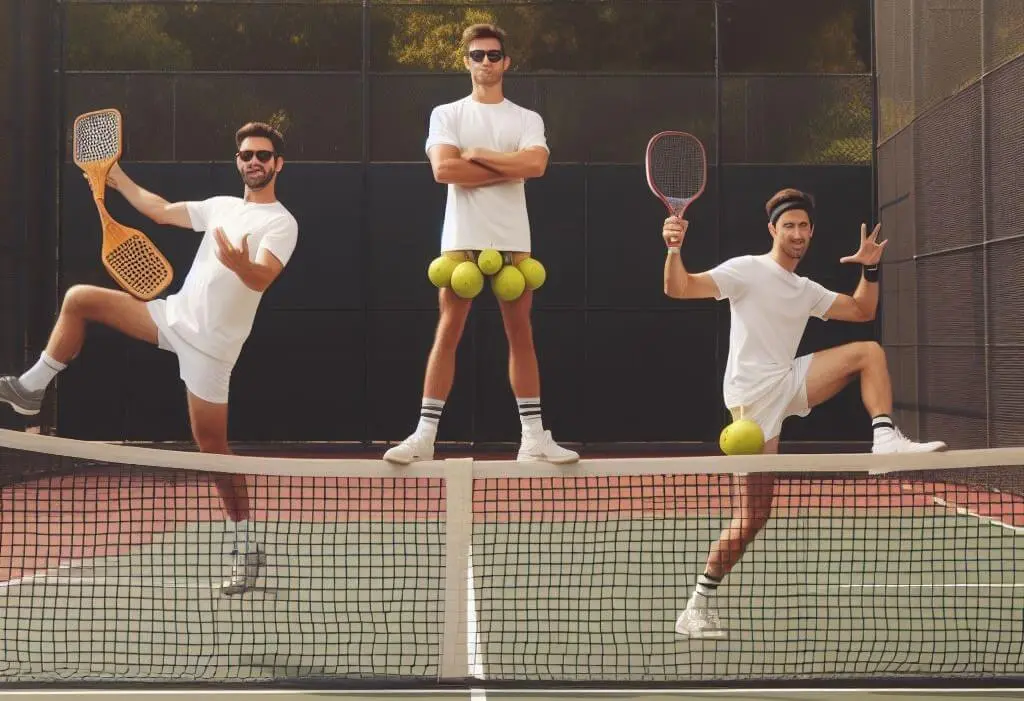
Let’s cover these terms too and leave nothing behind that could confuse you on the court.
- Return: Returning the shot to opposing team side.
- Sandbagging: In pickleball terms this slangs stands for a person who pretend to be less skillful to participate in a tournament and to win it easly.
- Scorpion: Its a new type of shot gaining popularity now a day’s. Player’s hit it overhand hand while staying low that makes a scorpion shape. This is mostly played for defensive purposes to counter difficult shots.
- Switch: A swap of position after serve in doubles between teammates if a player thinks he can play well on either left or right.
- Tweener shot: According to pickleball terms when a shot passes from between opponent’s legs is called a tweener.
- Dig: A shot played with the downward motion so that the ball lands in kitchen area.
- Flick: A shot played with long arm to volley a ball that is suppose to be land in the NVZ area. Most of the shot that lands in kitchen area are difficult to hit back with power for that purpose this technique could be used.
- ATP (around the post): A shot that is hit around the post. It is hard to master this technique but could be useful to get points.
Are there more pickleball terms?
All known and most commonly used pickleball terms are included in the above list. At the end, we want to add some bonus terms that are used for fun. These are mostly used for the players according to the abilities either they are good or bad at.
Funny pickleball terms.
- Pickleball widow: Spouse of a player who is always left alone because his mate is so obsessed with pickleball.
- Dinkfest: If a massive portion of a game is played with dinks (soft shot’s) It will called dinkfest.
- Poachmaster: This term is used to describe a player who is good at poaching.
- Lobzilla: A player who play’s lob shots (shot that looks like will disappear ball).
- Smashville: A match that is mostly played with smash shots.
- Volley llama: A shot that bounces in the kitchen area.
- Kitchensink: Used to describe a person who master’s different types of shots.
- Pickleball prolapse: A sudden loss of form while playing a match.
End line.
At the end of our article we hope to met your expectations to learn all kind of pickleball terms and glossary. You can subscribe to our news letter to stay update and learn more new topics about pickleball and stay updated about every new thing.
